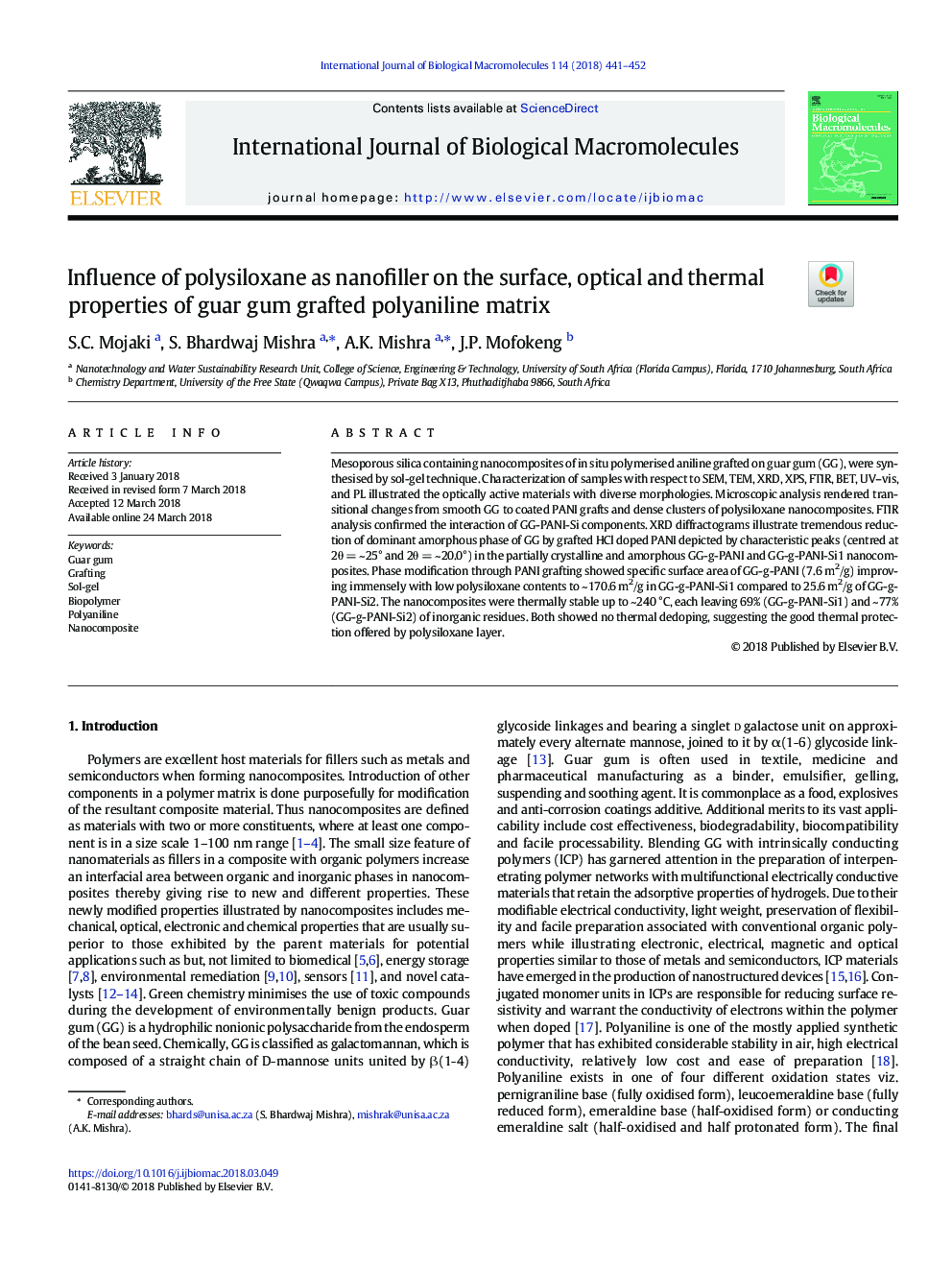| Article ID | Journal | Published Year | Pages | File Type |
|---|---|---|---|---|
| 8327307 | International Journal of Biological Macromolecules | 2018 | 12 Pages |
Abstract
Mesoporous silica containing nanocomposites of in situ polymerised aniline grafted on guar gum (GG), were synthesised by sol-gel technique. Characterization of samples with respect to SEM, TEM, XRD, XPS, FTIR, BET, UV-vis, and PL illustrated the optically active materials with diverse morphologies. Microscopic analysis rendered transitional changes from smooth GG to coated PANI grafts and dense clusters of polysiloxane nanocomposites. FTIR analysis confirmed the interaction of GG-PANI-Si components. XRD diffractograms illustrate tremendous reduction of dominant amorphous phase of GG by grafted HCl doped PANI depicted by characteristic peaks (centred at 2θ = ~25° and 2θ = ~20.0°) in the partially crystalline and amorphous GG-g-PANI and GG-g-PANI-Si1 nanocomposites. Phase modification through PANI grafting showed specific surface area of GG-g-PANI (7.6 m2/g) improving immensely with low polysiloxane contents to ~170.6 m2/g in GG-g-PANI-Si1 compared to 25.6 m2/g of GG-g-PANI-Si2. The nanocomposites were thermally stable up to ~240 °C, each leaving 69% (GG-g-PANI-Si1) and ~77% (GG-g-PANI-Si2) of inorganic residues. Both showed no thermal dedoping, suggesting the good thermal protection offered by polysiloxane layer.
Related Topics
Life Sciences
Biochemistry, Genetics and Molecular Biology
Biochemistry
Authors
S.C. Mojaki, S. Bhardwaj Mishra, A.K. Mishra, J.P. Mofokeng,
